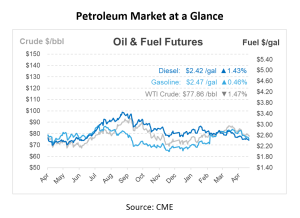
What’s That: Combustion
Are you ready to spark your curiosity? Now You Can. Today’s What’s That Wednesday is covering all things combustion and igniting fuel in diesel engines. Combustion is the heartthrob that keeps the wheels turning in diesel engines. Join us as we explore how this process works to power our diesel engines and its direct relationship with cetane ratings.
What is combustion?
Combustion is a chemical process in which a substance reacts rapidly with oxygen and gives off heat. In the context of everyday use, it often refers to the burning of fuel like wood, gasoline, or diesel. Taking it a step further, combustion is what powers a diesel engine. Unlike gasoline engines, which use spark plugs to ignite the fuel-air mixture, diesel engines rely on the heat of compressed air. Here’s a step-by-step breakdown of the process:
Intake of Air: The engine draws in air and compresses it, which dramatically increases the air’s temperature.
Fuel Injection: At the peak of the air’s compression, the engine injects diesel fuel into the combustion chamber. The high temperature of the compressed air is enough to ignite the diesel fuel.
Combustion: When the fuel ignites, it pushes the piston down, which in turn powers the engine.
Exhaust: After the combustion, the exhaust gases are expelled from the engine.
The fundamental principle of diesel combustion involves the release of chemical energy from the fuel. For this to occur, oxygen must be available in a particular manner that supports combustion. A critical component of this process is the preparation of the fuel-air mixture.
In diesel engines, fuel is usually injected into the cylinder near the end of the compression stroke, just before the piston reaches the top dead center. The fuel, injected at high velocity as one or more jets through the small openings in the injector tip, breaks up into tiny droplets. These droplets then penetrate the combustion chamber, absorb heat from the compressed hot air around them, vaporize, and mix with the high-temperature, high-pressure air. As the piston moves closer to top dead center, the mixture’s temperature reaches the fuel’s ignition point. Ignition of the premixed fuel and air happens quickly after a short delay, marking the start of combustion, indicated by a sharp rise in cylinder pressure as the mixture burns. This initial combustion phase also helps compress and heat the unburned portion of the charge, reducing the ignition delay for the remaining fuel and increasing its evaporation rate.
History Lesson on Combustion
Understanding combustion in diesel engines has been a complex endeavor. It was not until the 1990s that a deeper comprehension of its intricate mechanisms began to unfold. Despite decades of challenges and the use of advanced tools like high-speed photography in “transparent” engines, the computational abilities of modern computers, and numerous mathematical models designed to simulate diesel engine combustion, the full intricacies of the process remained elusive. A breakthrough occurred in the 1990s with the introduction of laser-sheet imaging techniques to traditional diesel combustion studies, significantly enhancing our understanding of these mechanisms.
The Relationship Between Combustion and Cetane Ratings
The cetane rating is a direct indicator of its combustion quality and impacts the combustion process in diesel engines. With a higher cetane number, the diesel fuel burns more efficiently and effectively, enhancing engine performance, reducing wear and tear, and decreasing emissions. For diesel engine owners, using fuel with the appropriate cetane rating is crucial for maintaining engine health and ensuring optimal performance.
The chemical composition of diesel affects how it burns. Fuels with high paraffinic content tend to have better combustion characteristics. However, the presence of impurities like sulfur and water can negatively impact combustion, leading to increased maintenance issues and higher emissions. Diesel fuel properties are adjusted seasonally to account for temperature changes that affect performance. Winter diesel contains additives to prevent waxing or gelling in cold weather, while summer formulations can have higher energy content.
Regular engine maintenance is essential to ensure optimal combustion. This includes routine checks and replacements of filters, injectors, and other components that can be affected by fuel quality. Mansfield brings an analytical approach to improving the quality of your fuel and equipment. We offer fuel testing, tank cleaning, and fuel system monitoring, as well as a proactive additive program to ensure your fuel is in tip-top shape all year long.

This article is part of Daily Market News & Insights
Tagged:
MARKET CONDITION REPORT - DISCLAIMER
The information contained herein is derived from sources believed to be reliable; however, this information is not guaranteed as to its accuracy or completeness. Furthermore, no responsibility is assumed for use of this material and no express or implied warranties or guarantees are made. This material and any view or comment expressed herein are provided for informational purposes only and should not be construed in any way as an inducement or recommendation to buy or sell products, commodity futures or options contracts.





